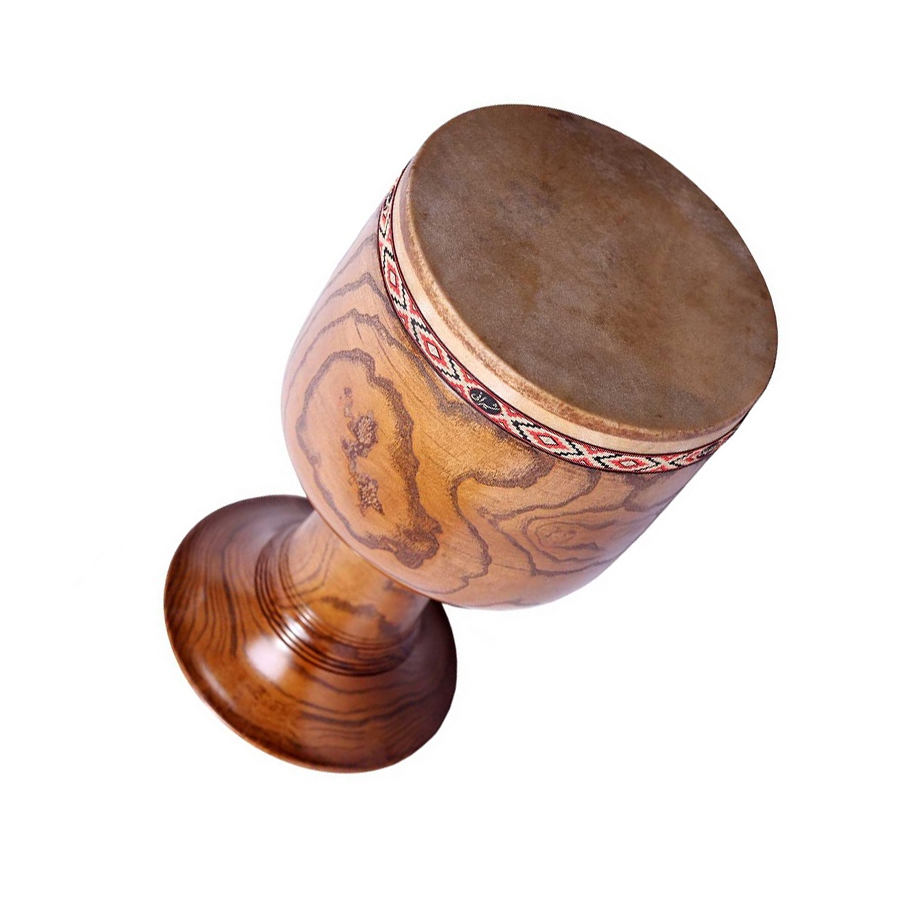The tunbak, also known as tombak or zarb, is a captivating percussion instrument deeply ingrained in the musical traditions of Sistan and Baluchistan, Iran. Here’s a closer look at its history, characteristics, and significance in the region:
History and Origin:
Ancient roots: The tunbak’s history stretches back centuries, with evidence of its use in ancient Persia and Mesopotamia. Some scholars believe it originated in the western region of Persia, including Sistan and Baluchistan.
Evolution and adaptation:Over time, the tunbak evolved and adapted to the unique musical styles of different regions. In Sistan and Baluchistan, it became a key instrument in local folk and traditional music.
Characteristics:
Goblet-shaped: The tunbak is a goblet-shaped drum, typically made of wood like walnut, ash, or mulberry. The drumhead is usually made of goatskin, camel skin, or calfskin.
Playing technique:The instrument is played with one or both hands, fingers, and sometimes even the palm, creating a diverse range of sounds and rhythms. Players often wear metal finger rings for added percussive effects.
Sound and versatility: The tunbak produces a rich, resonant sound that can be sharp, mellow, or even buzzing depending on the playing technique. It can be used for solo performances, accompanying other instruments, and setting the rhythm for various dances and ceremonies.
Significance in Sistan and Baluchistan:
Cultural identity: The tunbak is deeply entwined with the cultural identity of Sistan and Baluchistan. Its rhythmic beats accompany traditional dances like the “lezeh” and “chaahar mahla”, and its melodies evoke the spirit of the region’s vibrant culture.
Social gatherings:The tunbak is a prominent feature at social gatherings, weddings, and celebrations. Its music brings people together, fosters a sense of community, and creates a joyous atmosphere.
Musical heritage: Skilled tunbak players are highly respected in the region, and their playing techniques are passed down through generations. This ensures the preservation of the instrument’s rich heritage and its continued role in Sistan and Baluchistan’s musical landscape.
Future of the Tunbak:
Modernization:While traditionally played in a solo or accompanying role, the tunbak is increasingly being incorporated into contemporary music genres, blending with other instruments and styles.
Education and preservation: Efforts are underway to educate future generations about the tunbak and its importance in the region’s cultural heritage. This includes workshops, music schools, and initiatives to document playing techniques and compositions.
Global recognition:The tunbak’s unique sound and versatility are gaining international recognition. This can lead to increased exposure for Sistan and Baluchistan’s musical traditions and a wider appreciation for the instrument’s cultural significance.
Overall, the tunbak is more than just an instrument in Sistan and Baluchistan; it’s a symbol of cultural identity, a source of joy and celebration, and a vital link to the region’s rich musical heritage. By preserving its legacy and embracing its potential, the tunbak can continue to resonate with future generations, carrying the spirit of Sistan and Baluchistan through its captivating rhythms.


